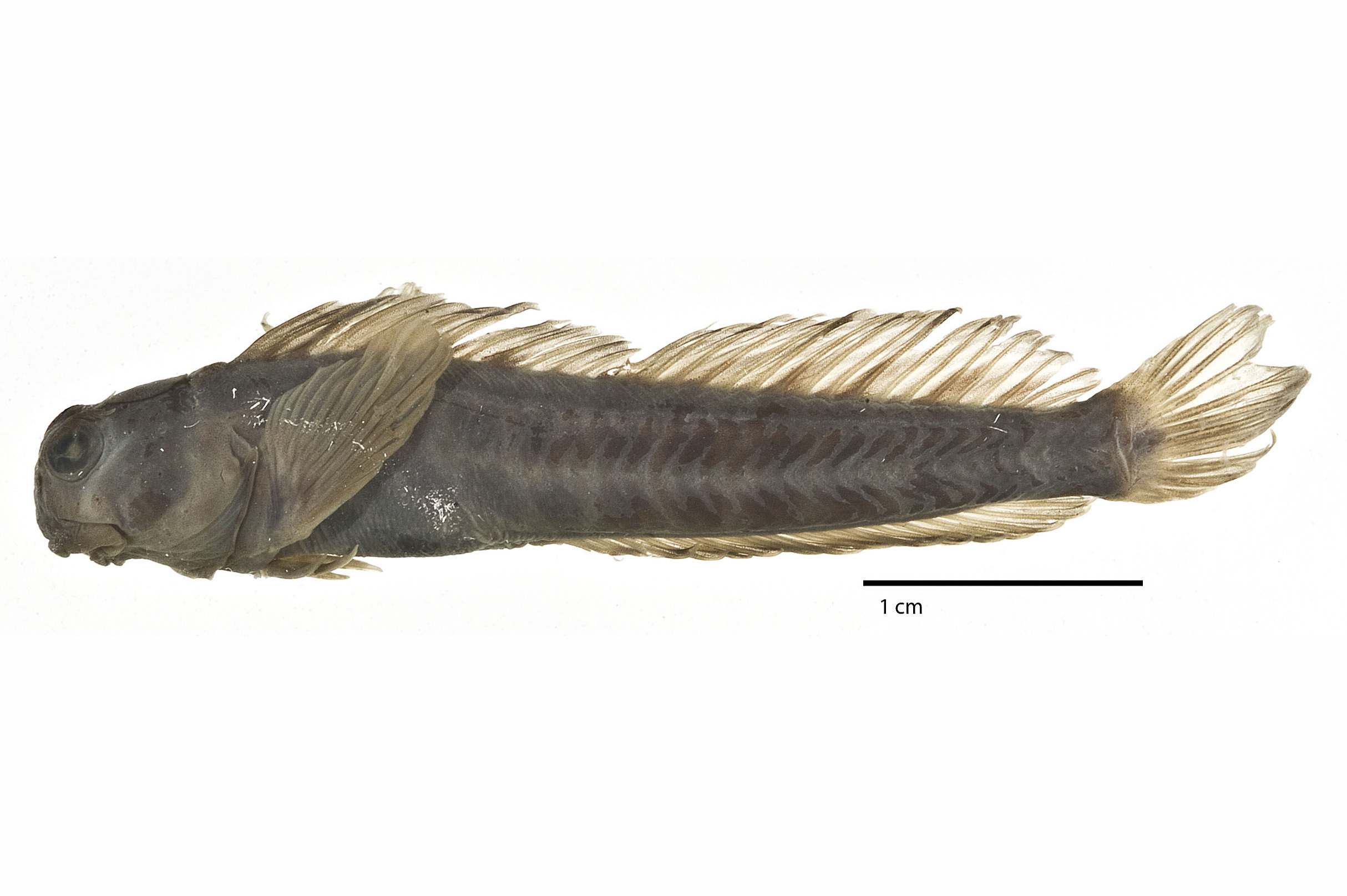Christmas Rockskipper, Praealticus natalis (Regan 1909)
Other Names: Natal Blenny, Natal Rockskipper

Syntype of Salarias natalis (= Praealticus natalis), USNM 157374, from Christmas Island in the eastern Indian Ocean. Source: Smithsonian Institution, National Museum of Natural History, Department of Vertebrate Zoology, Division of Fishes. License: CC By Attribution-NonCommercial-ShareAlike
Summary:
A rockskipper with irregular dark blotches or bars along the side, small white spots on the snout and pectoral fin, and large blotches on the lower part of the head and pectoral-fin base. The Christmas Rockskipper is known only from the Australian territory of Christmas island in the eastern Indian Ocean.
Cite this page as:
Bray, D.J. 2022, Praealticus natalis in Fishes of Australia, accessed 19 Apr 2024, https://fishesofaustralia.net.au/Home/species/4982
Christmas Rockskipper, Praealticus natalis (Regan 1909)
More Info
|
Distribution |
The species is known only from the Australian Territory of Christmas Island in the eastern Indian Ocean. Inhabits tidepools in the intertidal zone on rocky shorelines. |
|
Features |
Dorsal fin XIII, 16-19; Anal fin II, 18-20; Pectoral fin 15; Pelvic fin i, 4: Caudal fin (segmented rays) 14, middle 3-9 branched. Body elongate, depth at anal-fin origin about 6.3-6.8 in SL; supra-orbital tentacle pinnately branched (branching on either side of a common axis); cirri absent from nape; a small (sually unbranched cirrus on hind rim of nostril; upper and lower lip margins smooth; occipital crest present in males; last dorsal-fin ray connected by membrane to caudal peduncle. |
|
Etymology |
The specific name is from the Latin natalis (= birthday, of or belonging to one's birth), in reference to Christmas Island, the type locality. In ecclesiastical Latin, the word was used to denote the festival of the nativity of Christ, or Christmas. |
|
Species Citation |
Salarias natalis Regan 1909, Proc. Zool. Soc. Lond. 1909: 405, pl 66(4). Type locality: Christmas Island. |
|
Author |
Bray, D.J. 2022 |
|
Resources |
Christmas Rockskipper, Praealticus natalis (Regan 1909)
References
Allen, G.R. & Erdmann, M.V. 2012. Reef fishes of the East Indies. Perth : Tropical Reef Research 3 vols, 1260 pp.
Allen, G.R., Steene, R.C. & Orchard, M. 2007. Fishes of Christmas Island. Christmas Island : Christmas Island Natural History Association 2 edn, 284 pp.
Allen, G.R. & Steene, R.C. 1988. Fishes of Christmas Island Indian Ocean. Christmas Island : Christmas Island Natural History Association 197 pp.
Bath, H. 1992. Revision der Gattung Praealticus Schultz & Chapman 1960 (Pisces: Blenniidae). Senckenbergiana Biologica 72(nos 4/6): 237-316
Hobbs, J.-P.A., Newman, S.J., Mitsopoulos, G.E.A., Travers, M.J., Skepper, C.L., Gilligan, J.J., Allen, G.A., Choat, H.J. & Ayling, A.M. 2014. Checklist and new records of Christmas Island fishes: the influence of isolation, biogeography and habitat availability on species abundance and community composition. Raffles Bulletin of Zoology Suppl. 30: 184-202. See ref online
Regan, C.T. 1909. A collection of fishes made by Dr. C.W. Andrews, F.R.S., at Christmas Island. Proceedings of the Zoological Society of London 1909: 403-406 pls 65 & 66 See ref at BHL
Schultz, L.P. & Chapman, W.M. 1960. Subfamily Salarinae. pp. 302-382 in Schultz, L.P., Chapman, W.M., Lachner, E.A. & Woods, L.P. (eds). Fishes of the Marshall and Marianas Islands. Vol. 2. Families Mullidae through Stromateidae. Bulletin of the United States National Museum 202(2): 1-438, figs 91-132, pls 75-123
Watson, W. 2009. Larval development in blennies. pp. 309-350. In Patzner, R.A., E.J. Gonçalves, P.A. Hastings and B.G. Kapoor (eds) The biology of blennies. Science Publishers, Enfield, NH, USA. 482 pp.
Williams, J.T. 2014. Praealticus natalis. The IUCN Red List of Threatened Species 2014: e.T48342342A48398267. http://dx.doi.org/10.2305/IUCN.UK.2014-3.RLTS.T48342342A48398267.en. Downloaded on 15 February 2018.


